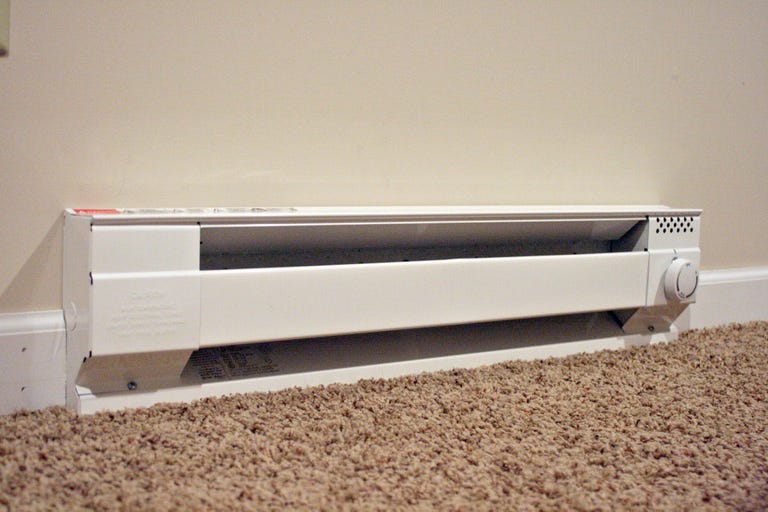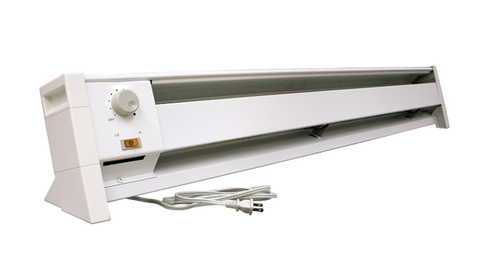Why Baseboard Heaters Are So Common in Old Homes
Forced air isn't the only way to heat a home.
By Timothy Dahl
 FLICKRHOMESPOT HQ
FLICKRHOMESPOT HQAs long as old homes exist, so will baseboard heaters. Baseboard heaters provide a simple and affordable solution for heating an older home that does not have ductwork and have no way to install any. They also work great to supplement the heating system in a newer home.
Forced air heat that is found in most modern homes consists of a furnace that blows heated air through tubes (ductwork) that are connected to vents throughout a home. This is a fast and efficient way to warm a home, but the ductwork requires space between walls and under floors.
In an older home (pre-1960), the walls may be be built with plaster and lath, which is much more difficult and too costly to navigate around, compared to drywall. Old plaster cracks easily and there is a lot more dust to deal with when cutting into an older wall. Hence, baseboard heaters are a much easier system to install and maintain in an older home.
Baseboard heaters come in two flavors—electric and hydronic—and there are pros and cons to each.

FAHREHHEAT
Electric baseboard heaters warm quickly and don't require a central system to operate. They can be hardwired into a home's power source like this model from Cadet, or just plug into a standard outlet like this unit from Fahrenheat. Electric baseboard heaters work by drawing the cool air near the floor over heated metal fins and then a small fan pushes the warm air back into the room. These heaters can be set to run on a local thermostat or tied into a home's system.
But the main drawback to electric baseboard heaters is that they are notoriously inefficient, so they are often paired with a central heating system so they aren't running at all hours of the day.
As for hydronic systems, they work by circulating heated water from a boiler in the basement, to the baseboard heaters (also known as convectors) in each room. A small pipe filled with hot water can carry as much heat as an air-filled duct, and it fits more easily between wall studs and floor joists, which makes it ideal for older homes.
Similar to an electric baseboard heater, this convective system draws cool air into the unit and allows heated air to flow out the top. Hydronic systems are usually more efficient as the heated water takes longer to cool and multiple rooms can be heated from one system.
IT'S RARE YOU'LL FIND A NEW HOME BUILT WITH ONE OF THESE SYSTEMS, OR EVEN A RETROFITTED HOME.
Of course, the one downside subtracting from all those added benefits is that a hydronic baseboard heater is often much more expensive to install and takes longer to warm up. Most hydronic system were installed while the home was being built, and many are still heating these homes today. The initial cost of a boiler and running the copper tubing throughout the house makes these units more expensive, but it's rare you'll find a new home built with one of these systems, or even a retrofitted home.
Electric baseboard heaters or radiant heat systems are the preferred heating alternatives to a forced-air system, but most work together to help heat an entire house. But make sure you perform a home energy audit to make sure you're getting the most out of any heating system.
No comments:
Post a Comment